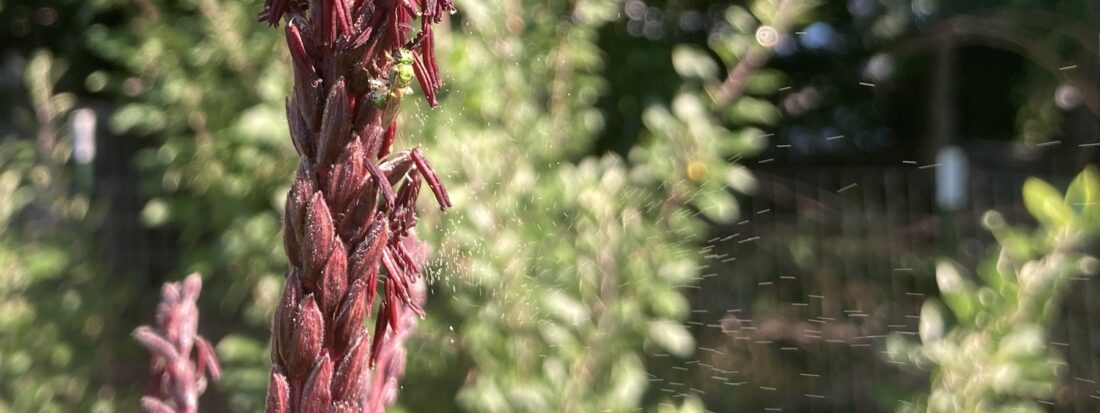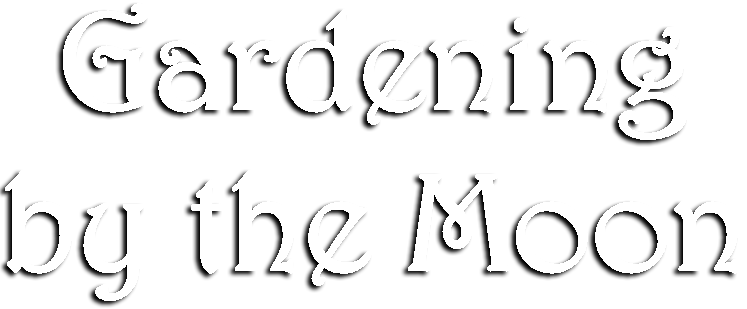Frequently Asked Questions

Astrological Planting
The information for this calendar comes through two main knowledge pathways: traditional European gardening methods, as passed down through the Foxfire books and works of Louise Riotte, and traditional Turtle Island gardening methods, as taught by contemporary indigenous elders and Seedkeepers such as Stephen Silverbear McComber and Rowen White.
A more recent source of wisdom on lunar gardening are the scientific experiments conducted starting in the 1950s and 60s and continuing through to the present day. More information on the cultural and academic sources for lunar gardening can be found on our further reading and works cited page.
Dr. Frank Brown of Northwestern University performed research over a ten-year period of time, keeping meticulous records of his results. He conducted his experiments in a laboratory with no direct moonlight, yet he found that plants absorbed more water at the time of the full moon.
John Jevons, author of “How to Grow More Vegetables” adds that when plants do have direct exposure to moonlight, the increasing light of the waxing moon stimulates and increases leaf growth, while during the decreasing light of the waning moon leaf growth slows and energy returns to the plant’s roots.
Further tests have been conducted, most notably by Lily Kolisko in Germany in 1939 and by Maria Thun in 1956. Thun found maximum germination on the waxing days just before the full moon and was surprised to discover that the signs of the zodiac played their part as well. She experimented with a variety of crops: carrots and parsnips (roots); lettuce, spinach, and corn salad (leaf); beans, peas, cucumbers, and tomatoes (fruit/seed); zinnias, snapdragons, and asters (air). Crops responded well when planted in the appropriate sign for their type of plant; cucumbers sown on leaf days had strong leafy growth, but did not produce many flowers.
There were some exceptions, of course. For instance the brassica family (broccoli, cauliflower, etc.), which one might consider a flower rather than a leaf, favored being planted on leaf days (water signs). Their tests also indicated that responses to lunar planting were heightened when planted in organic soil that had not been treated with synthetic fertilizer or pesticides.
More information is available on our citations and further reading page, which we update as our research continues, or over in our blog, where we track our own experiments on lunar planting, and where all of our data is available for you to examine and judge for yourself.
Because the easily-observed, repeating astrological cycle has been used as a time keeping device in many places for many centuries, there are of course different ways of calculating and interpreting the transit data. Two main ways are the geocentric system and the heliocentric system, whose positions can vary by as much as four days. As with most things, some folks swear by one system and some swear by the other. We use the geocentric system in accordance with Papa Riotte’s old country teachings, but that isn’t the only reason we plant our seeds by geocentric positions.
As related in her book, “Astrological Gardening”:
‘Then something else came to Dr. Timmins’ attention. He observed that there had been similar tests reported that did not indicate results favorable to the moon-planting theory. As a scientist, he questioned why one set of experiments indicated a positive verification of moon planting, and others did not. Upon checking the other tests, he found that the experimenters had followed not the geocentric system for determining moon sign positions, but the heliocentric. When the times used in the other experiments were converted to the geocentric system, the dates chosen were found to be in barren rather than fertile moon signs.’
The research team at Wolf Hill Press is constantly reading, listening, looking for new resources, and conducting experiments to investigate different aspects of lunar gardening. We combine information about moon phases and signs, organic gardening practices, vegetables’ specific needs, and regional climates and frost dates to craft the planting lists and garden activities for each edition of the calendar. If you have any questions about the reasoning behind our planting dates, we’d love to answer them.
How to Purchase
We print each year’s calendar the previous summer and update our shop annually, usually in August.
Absolutely! Digital downloads are available by the month for $2 each, in a six month bundle for $7.50, and in a nine month bundle for $9.75. Or, download the full year calendar for only $12 (a savings of 50% over purchasing monthly) and also receive the free planting guide included in the print calendar. (Free planting guide not available for downloads of 2022 calendar, this is offer is for 2023 and going forward.)
We’re not happy until you’re happy—if you’re dissatisfied in any way with your print calendar we would be happy to refund your money or offer you an exchange for a different version. Please note that customer pays all return shipping.
The printed wall calendar is $15.95. The digital downloads are $12/year, $9.75/9 months, $7.50/6 months, or $2/month.
You sure can. Please print out [this order form] or copy it over onto a piece of paper and include it with your check (made out to “Wolf Hill Press, LLC”). Allow at least two weeks for delivery.
Sure—give us a call at the number on our contact page. If we’re not in the office, please leave a message, and thank you for your patience. We’re a very small company and often need to be out in the garden taking pictures.
If you have an account with us, you can view your order there. If not, you will be able to follow it through the tracking number.
Once your order has shipped, you will receive an email with the tracking number.
About the Calendar
Those mark each hour of the day so you can see approximately what time of day the moon sign changes. It reads like a time line, with the morning hours on the left of center, and the evening hours to the right of center. The gray bars that span several days show when the moon is in that sign.
Not at this time. We are adding digital calendars in Central Time to our offerings for the 2023 calendar. If you’re interested in a Mountain Time calendar, please let us know; we would be happy to add that option with customer interest.
Mostly in our home garden, where we grow most of our household’s fruit and an awful lot of our vegetables. We do sometimes take pictures at a friend’s garden, an organic farm, or a botanical garden.
At this time, yes, but we’re following the news on potential changes to Daylight Savings within the US closely.
Yes, any combination of Long/Medium/Short and Pacific/Central/Eastern are available as digital downloads, in both print-friendly and mobile-friendly versions.
Digital Downloads
Digital downloads are .pdf files which are easy to view on any computer or device regardless of age or operating system. The .pdfs are available in a print-friendly version which is exactly like the wall calendar but comes in a greater variety of options, or a mobile-friendly version which is laid out vertically to be more legible on a phone or tablet.
The download files will available on your order confirmation screen immediately after purchase; they will also be sent to your email and available in your account if you have one with us. Click the download link to view the files in your computer or device’s .pdf reader, and print them from there by clicking “File > Print.” You can also use the “CTRL + P” keyboard shortcut on a PC, or “⌘ + P” on a Mac.
Decide if you’re going to print it/look at it on a larger computer screen or if you’re going to look at it on a smaller mobile screen. Choose your time zone from Pacific, Central, or Eastern (if you’re in Mountain Time—email us!). Then choose your season length by average frost-free dates: Long Season (March 15 – November 30), Medium Season (April 15 – October 15) or Short (May 15 – September 30). You can find more information on frost dates here.
Other
Caren Catterall, creator of Gardening by the Moon, retired the desktop computer program in 2021, the year before we at Wolf Hill Press bought the calendar and website. So far as we know, no one has bought the rights to the computer program from her and there is not currently a Gardening by the Moon app.
Not at this time, although we certainly hope to publish more in the future. Our designer, Maxx Hill, does have a poster-format lunar calendar available for sale via Syracuse Cultural Workers.
Whoops! Even with our multi-stage editing process, errors do occasionally slip through. Please contact us to let us know and we’ll be sure not to make the same one again next year—and thank you so much for taking the time to help make the calendar better.

